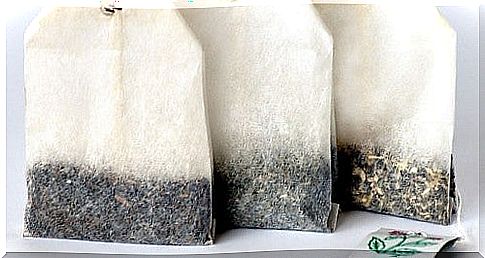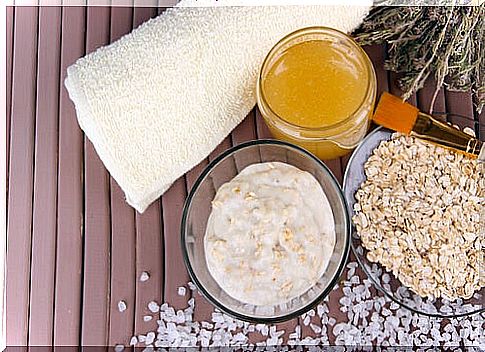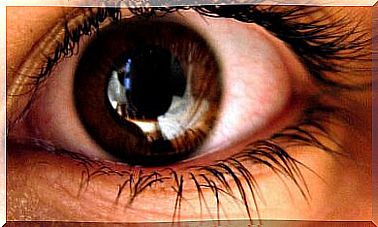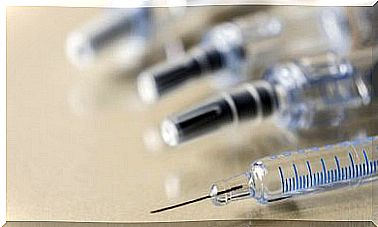Take Advantage Of Infusion Sachets To Make Masks
Infusion sachets, thanks to the properties of their components, can be used to make beneficial masks for all skin types.

In other articles, we have already made known the different uses that can be given to the infusion sachets already used. We can put them in the cupboards or in the fridge to remove odors, we can use them to clean windows and carpets, to fertilize the soil in the garden, etc.
But, below, we explain how you can reuse the infusion bags to prepare masks that can help you cleanse, nourish and relax the skin. Find out!
The infusion sachets

The plant or herb remains contained in the infusion sachets, once soaked in hot water, activate their properties. These are passed into the water, but also remain on the damp leaves.
By mixing them with other ingredients, their effects can be enhanced. In addition, they allow us to gently exfoliate the face once we remove the mask.
Thus, they can be used the same day, stored in the fridge to use in the next two days, or frozen for when we need them.
What infusion bags can be used?

Next, we detail which are the infusion sachets that can be more beneficial for the skin of the skin thanks to the properties of its components:
- Tea green. Green tea is a powerful antioxidant that helps prevent free radicals that cause aging because it is rich in catechins, as evidenced by this study published in Chinese medicine . In addition, it helps regulate excess fat thanks to its astringent properties.
- Manzanilla. Chamomile has soothing and anti-inflammatory properties, as this publication by Electronic Physician points out , so it can be beneficial for the most sensitive, irritated or reddened skin. It could also help relieve bags under your eyes and a puffy face.
- Romero. Rosemary infusions are believed to help improve circulation when we take them and also when we apply them to the skin. In fact, research published in Complementary therapies in medicine , carried out on a person with Raynaud’s disease, points out that a hand massage with rosemary oil helped him warm up his fingers faster. Although, for the moment, more studies are needed in this regard.
- Rose hip. With the fruit of the rose hip, the famous rosehip oil is made, a beneficial element for mature and dry skin, and to prevent wrinkles and expression marks. Thus, an article published in the Scientia Agropecuaria magazine points out its antioxidant and healing properties.
- Horsetail: This medicinal plant with diuretic and remineralizing properties provides a large amount of silicon, an essential mineral for elastic, toned and wrinkle-free skin. In addition, it can help the treatment of osteoporosis, as evidenced by this study published in Cell proliferation . Also, its antioxidant properties help fight free radicals to prevent cell damage.
How to prepare the mask?

To prepare the mask, we will choose an already used infusion bag, which will be the base ingredient of our mask. We will open the bag and put the content in a container. There, we will also add the rest of the ingredients, adapted to our skin type:
- To hydrate without adding too much fat : yogurt, oat milk, banana, honey, coconut oil or jojoba oil, egg yolk.
- To nourish in depth : olive oil, sesame oil, flax oil, rosehip oil, avocado.
- To firm the skin : aloe vera gel, egg white.
- To remove excess fat : lemon juice, pineapple juice, sea water.
- To regulate combination skin : lavender essential oil, white clay.
- To soothe delicate skin : rose water, lavender essential oil, yogurt, oatmeal, white clay.
- To control pimples and prevent acne : green clay, tea tree essential oil, peppermint essential oil, evening primrose oil, brewer’s yeast.
The ideal mask should be prepared with the content of an infusion bag and two ingredients suitable for each skin type. But how do we use it?
How do we apply the mask?
- To start, we will mix the ingredients until we get a paste that we can spread easily. It shouldn’t be too runny or too thick.
- Afterwards, we will apply it to the skin, with the face washed, clean and dry. We will avoid the most sensitive area around the eyes.
- Next, we will let it act for between 15 and 30 minutes.
- Afterwards, we will rinse with water, gently making circles, as an exfoliation, in the most oily areas. These are usually the forehead, the nose, and sometimes the chin.
- Next, we will hydrate the skin with our usual lotion.
- We can apply this mask once a week.
- In addition, we recommend varying the ingredients to check which ones are best for our skin.
Recommendations on infusion bags to make masks
As you have seen, thanks to the properties of the compounds in tea bags, many masks can be made that can be beneficial for each type of skin.
However, it is important to consult with a doctor before trying any of the options we have discussed or changing your lifestyle, since natural products, such as tea, can cause allergic reactions or interfere with certain medications.









